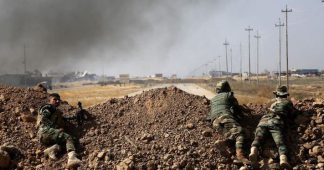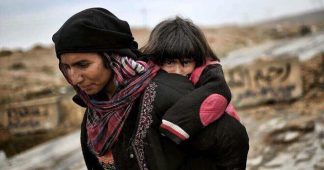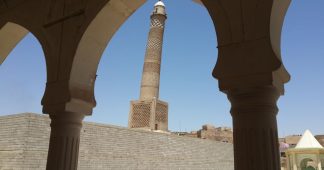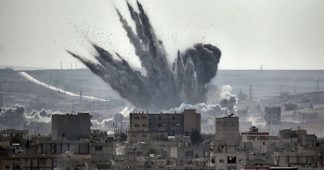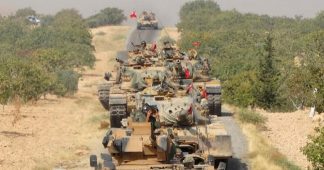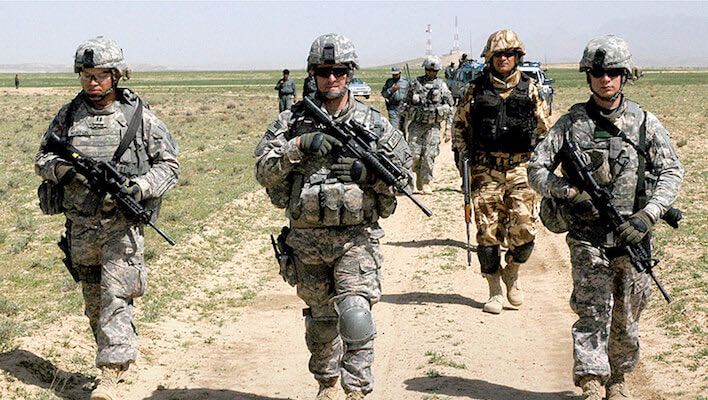The battle for Mosul is a ferocious struggle that has now been going on for 256 days, or two months longer than the battle of Stalingrad. The fighting between Iraqi government forces and Isis is much smaller in scale than in Russia 75 years ago, but is comparable in its savagery and the importance with which both sides regard the outcome of the battle.
Iraqi Prime Minister Haider al-Abadi is declaring “the end of the Isis state-let” as Iraqi forces capture the ruins of the al-Nuri mosque where Abu Bakr al-Baghdadi, who may himself be dead, declared the caliphate three years ago. Isis wanted to avoid the humiliation of seeing the Iraqi flag replacing their own colours on the top of the famous minaret.
Wars in Iraq have seen many exaggerated declarations of victory since the US-led invasion in 2003, but this one has more substance than most, even if it is a little premature. Isis fighters still hold part of the Old City of Mosul where the ancient close-packed housing and narrow alleyways are ideal for their style of making war.
Whatever the precise moment when the last Isis resistance is extinguished in the city, the Islamic State as a geographical unit in northern Iraq and western Syria is being smashed up. It still holds some big enclaves in the Tigris and Euphrates valleys, but it has lost almost its urban centres aside from Raqqa in Syria and Tal Afar west of Mosul. Isis is rooted in the five or six million strong Sunni Arab community in Iraq which has endured devastating losses since it lost power with the fall of Saddam Hussein in 2003.
There is no doubt about the importance of the victory won by the Iraqi government forces. It could not have happened without the devastating US-led air strikes, but it was Iraqi ground troops which were decisive in defeating a fanatical but militarily skilful enemy which inflicted heavy losses on them.
The symbolic significance of recapturing Mosul is simple, but far-reaching. Isis strode onto the world stage in June 2014 when a few thousand of its fighters captured the city, which, with a population of two million, was the second largest in Iraq, after four days fighting against an Iraqi garrison supposedly numbering 60,000 men. It was a victory so astonishing that Isis believed that it could only have been won with divine assistance. Defeat for Isis in Mosul and failure on every other battlefront damages the claim for divine sanction for its rule.
The foundering of Isis is being lauded in Baghdad and by relieved government leaders around the world. But it may be that the enemies of Isis are being a little too speedy in dividing up the lion’s skin before checking that the animal has really expired. Looking back at history of the epic battle for Mosul, there are some conclusions that are less than comforting.
Denunciations of Isis as a murderous death cult are not far off the mark, but understandable revulsion at its atrocities tends to obscure the fact that its commanders are experienced military experts. The movement has been written off previously by overconfident adversaries, such as during the period between 2007 and 2011 when it was hard hit by a reinforced US army in Iraq and the hostility of much of the Sunni Arab community. It survived by lying low and waiting for the circumstances to turn once again in its favour, as with the start of the uprising in Syria.
As regards to developments in Iraq and Syria after the impending fall of Mosul, keep in mind the old military adage: “The enemy also has a plan.” Isis has always known that it could not hold Mosul or any other stronghold in the face of air strikes called in by enemy ground forces. In battling for cities like Tikrit, Baiji, Ramadi and Fallujah over the past two years, it did not fight to the last man, leaving detachments behind to inflict maximum casualties on Iraqi forces before slipping away. Isis may be merciless in expending the lives of its militarily untrained followers as suicide bombers, but it is careful in conserving a core of veteran fighters who cannot easily be replaced.
In fighting in east Mosul, the city being split in two by the Tigris river, Isis fielded less than 1,000 combatants in the front line and the true figure is probably less than half that number. They adopted a tactical system of fluid defence in which two or three snipers with back-up teams could hold back Iraqi government forces from entering a neighbourhood for days. Suicide bombers, frequently driving vehicles full of explosives, would wait for targets to get close in narrow streets before attacking them. Swiftly moving from house to house through holes cut in walls or through streets with tarpaulins draped overhead to prevent observation by aircraft and drones, Isis squads hoped to avoid being detected from above and destroyed by planes or artillery fire.
Isis is inevitably going to lose Mosul, but the eight long months it has taken for this to happen is impressive. It may have as few as 350 fighters in the Old City presently, but these cannot be entirely fought out as was illustrated by a well-planned counter-attack a week ago. Overall, the way in which Isis has fought to hold Mosul for so long is even more impressive than its surprising capture of the city three years ago.
The prolonged fightback may be an ominous sign of what is to come. Isis commanders had evidently thought hard on how to postpone the fall of Mosul and they will have given similar thought to staying in business afterwards. They control some large towns like Tal Afar and others in western Anbar province, though these will fall in due course. Less easy to subdue are their rural enclaves like Hawaijah in Kirkuk province and vast tracts of desert and semi-desert where Isis had its base and hideouts before it expanded explosively in 2014.
The systematic spreading of fear through terrorism is an integral part of the way Isis conducts warfare. It involves assassinations and suicide bombing to show strength and dominate the news agenda at home and abroad. There are strong signs of these tactics being already at work in 11 cities and towns in Iraq and five in Syria, which Isis has lost, according to the Combating Terrorism Centre at West Point. It says there have been 1,468 attacks between the day of liberation of these places and April 2017, though some of these involved only a few shots or rockets fired by Isis.
Isis know it made a comeback before and will try to resurrect itself again, though this will not be so easy the second time round because opponents are forewarned. Much of the Sunni Arab community is displaced, its cities, towns and villages wrecked or abandoned. Isis will hope to exploit the Iraqi government’s lack of troops to occupy effectively places it has recaptured. The return of government rule in Iraq and Syria often alienates local people because it almost always means corruption and racketeering. Isis is badly wounded, but it is still a long way from being dead.
